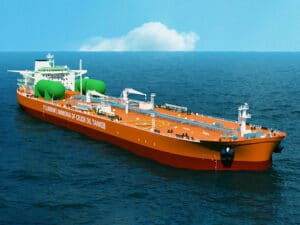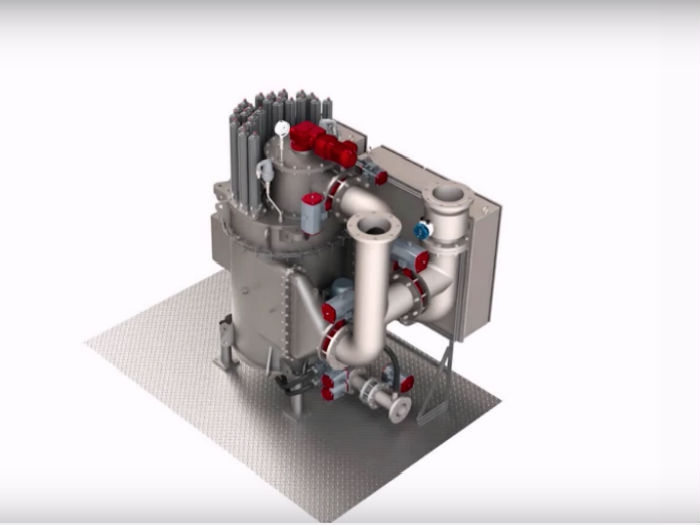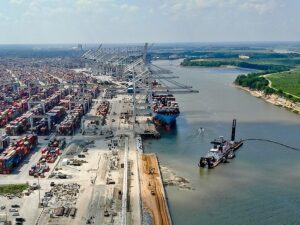
Choosing the right ballast water treatment system: Size matters
Written by Marine Log Staff
Trojan Marinex says its ballast water treatment system's compact footprint is as much as 50% of the size of competing systems
JUNE 29, 2018—Choosing the right ballast water treatment system (BWTS) for your vessel depends on a number of factors. What type of vessel is it? What’s its operational profile? Does it operate in brackish or fresh water? Does it operate in cold or tropical waters? “One size does not fit all,” says Thanassis Doussis, General Manager, Panmarine & Industrial Services Ltd., a Piraeus, Greece-based distributor and after sales service organization for BWTS manufacturer Trojan Marinex.
Marine Log caught up with Doussis, along with Trojan Marinex Product Specialist Andrew Daley at the recently concluded Posidonia 2018 exhibition in Greece to discuss some recent regulatory and technical developments in ballast water treatment. While IMO’s Ballast Water Management Convention dates back almost two decades, it entered into force almost one year ago—September 8, 2017. What it means is that vessel owners that operate and discharge ballast water in international waters need to have their vessels fitted with a type approved BWTS within five years. The “when” depends on the next renewal survey of the vessel’s International Oil Pollution Prevention (IOPP) certificate.
Trojan Marinex has been actively selling in the market since 2014. “The Trojan Marinex ballast water treatment system features filtration and UV light technology in one single housing,” explains Daley. “It allows owners to install one piece of equipment on the vessel. When the equipment is used during ballasting operations, it will disinfect the water and remove the local organisms at the port that could be invasive species when the water is moved from one port to another during transport. During deballasting, it uses only UV light to insure that the water is safe to discharge in the port.”
With the largest merchant fleet in the world, the Greek shipping community is an important one for Trojan Marinex. “There are 600 shipping companies in Greece and Cyprus,” says Doussis. He points out that Pan Marine & Industrial Services is able to provide comprehensive sales support for Trojan Marinex equipment, assisting with the service and commissioning of equipment on vessels at shipyards.
At right, Trojan Marinex Product Specialist Andrew Daley and Thanassis Doussis, General Manager, Panmarine & Industrial Services, at Posidonia 2018 in Piraeus, Greece
He also notes that when it comes to ballast water management, Greek shipowners are very savvy. “All of the technical managers are very well educated on ballast water treatment,” says Doussis. “One of their main concerns is the footprint of the equipment because it will have to be installed in an existing vessel. Another concern is the power availability for the operation of the equipment. There is not one solution for everyone. Owners must do their homework. They have to select the ballast water treatment technology that is appropriate for their operation.”
Trojan Marinex has focused its efforts on making its BWTS as compact as possible. That starts with the integration of its filtration and UV light technology into a single unit, which eliminates additional piping, cables, and cabinets that might otherwise be necessary. The compact design also translates into less electrical infrastructure.
“We continue to make improvements to our footprint,” says Daley. “One of the improvements we’ve been working on behind the scenes is integrating the flow meter into the treatment. That should be launched in the next few months—in time for SMM 2018. It will help us keep the footprint compact, which is essential for retrofits and it removes a large section of piping that would normally be required to accommodate the flow meter.”
He concludes, “We’re trying to make it as simple as possible. Our goal is to create just one piece of equipment that you have to install between two sections of piping.” That simplicity is welcome news to shipowners, naval architects, and shipyards.





Leave a Reply
You must be logged in to post a comment.